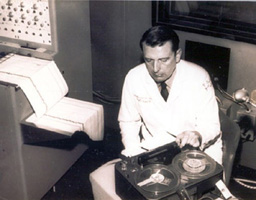|
In general terms, an altered conscious state can be defined as a mental state which can be subjectively recognized by an individual (or by an objective observer of the individual) as representing a difference in psychological functioning from that individual’s “normal,” alert, waking state. Twenty states of consciousness have been tentatively identified (with considerable overlapping) as worthy of further study.

Stanley Krippner
1. The Dreaming State can be identified on the electroencephalograph (EEG) by noting periods of rapid eye movements and the absence of “slow” brain waves. The dreaming state occurs periodically during the night as part of the sleep-dream cycle.
2. The Sleeping State can be identified on the EEG by an absence of rapid eye movements and by a gradually emerging pattern of “slow” brain waves. A person awakened from sleep will usually give a brief verbal report which differs considerably from dream reports; this brief verbal report indicates that mental activity is present during the sleeping state as well as during the dreaming state.
3. The Hypnagogic State occurs between wakefulness and sleep at the onset of the sleep-dream cycle. It is often characterized by visual imagery and sometimes includes auditory imagery as well; both types of images differ from mental activity experienced during sleeping and dreaming states.
4. The Hypnopompic State occurs between sleep and wakefulness at the end of the sleep-dream cycle. At times it is characterized by visual and/or auditory imagery, differing qualitatively from forms of mental activity which occur during sleeping and dreaming states.
5. The Hyperalert State is characterized by prolonged and increased vigilance while one is awake. It can be induced by drugs which stimulate the brain, by activities demanding intense concentration, or by measures necessary for survival during military operations (e.g., crow’s nest watch, sentry duty).
6. The Lethargic State is characterized by dulled, sluggish mental activity. It can be induced by fatigue, sleep deprivation, malnutrition, dehydration, improper sugar balance, drugs that depress brain activity, or by despondent moods and feelings.
7. States of Rapture are characterized by intense feeling and overpowering emotion, subjectively evaluated as pleasurable and positive in nature. These states can be induced by sexual stimulation, frenzied dances (e.g., the “whirling dervishes”), orgiastic rituals (e.g., witchcraft and voodoo), rites of passage (e.g., primitive puberty initiations), religious activities (e.g., conversion, “evangelistic” meetings, “speaking-intongues”), and certain drugs.
8. States of Hysteria are characterized by intense feeling and overpowering emotion, subjectively evaluated as negative and destructive in nature. These states can be induced by rage, anger, jealousy, panic, fear, terror, horror, fear of being “bewitched” or “possessed,” violent mob aictivity (e.g., “lynching parties,” “running berserk”), psychoneurotic anxiety, and certain drugs.
9. States of Fragmentation are characterized by lack of integration among important segments, aspects, or themes of the total personality. These states parallel conditions referred to as psychosis, severe psychoneurosis, dissociation, “multiple personality,” amnesia, and fugue episodes (in which someone forgets his past and begins a new life pattern). These states, which may be either temporary or long lasting, can be induced by certain drugs, physical trauma to the brain, psychological stress, physiological predispositions (which interact with psychological stress in some types of schizophrenia), and experimental manipulation (e.g., sensory deprivation, hypnosis).
10. Regressive States are characterized by behavior that is clearly inappropriate in terms of the individual’s physiological status and chronological age. These states may be temporary (e.g., a person who has undergone “age regression” as a result of experimental manipulation through hypnosis or drugs) or long lasting (e.g., an individual suffering from various types of senility).
11. Meditative States are characterized by minimal mental activity, the lack of visual imagery, and the presence of continuous alpha waves on the EEG. They may be induced by lack of external stimulation, massage, floating in water, or meditative disciplines (e.g., Yoga, Zen).
“Altered States of Consciousness” by Stanley Krippner is an extract from The Highest State of Consciousness edited by John W. White, published by White Crow Books and available from Amazon and other bookstores.
Paperback Kindle
www.whitecrowbooks.com/the highest state of consciousness
|